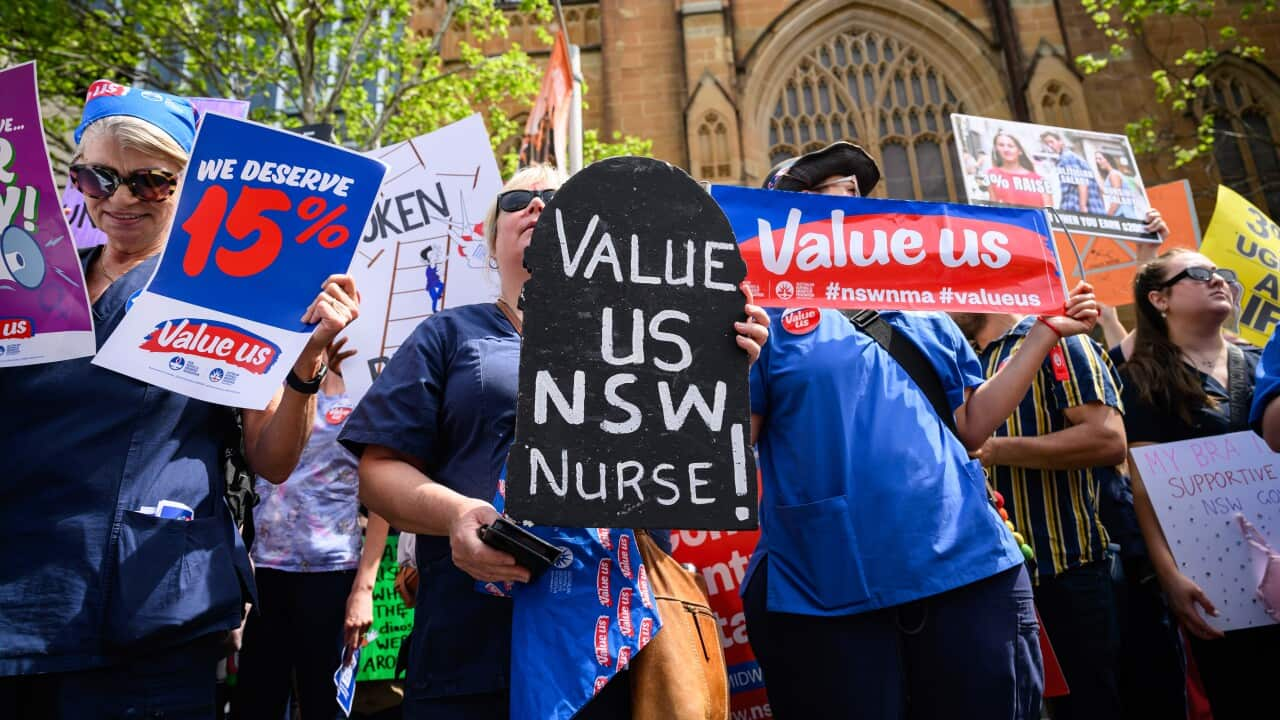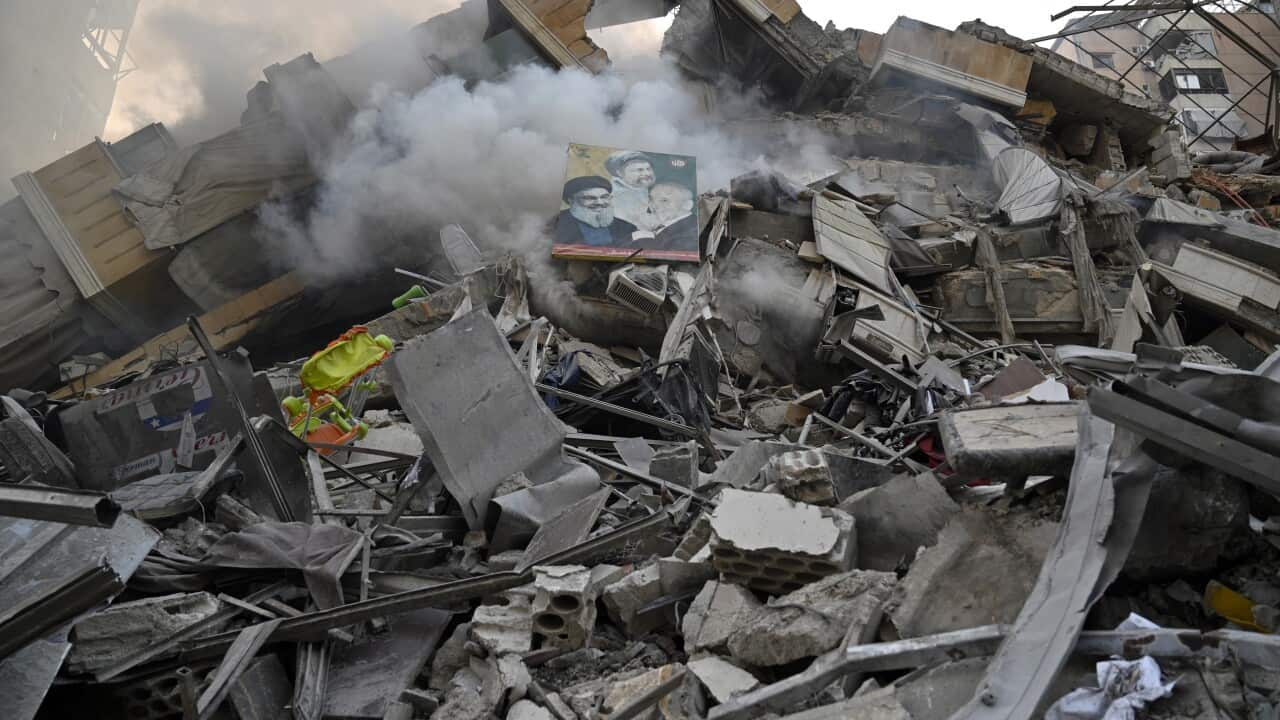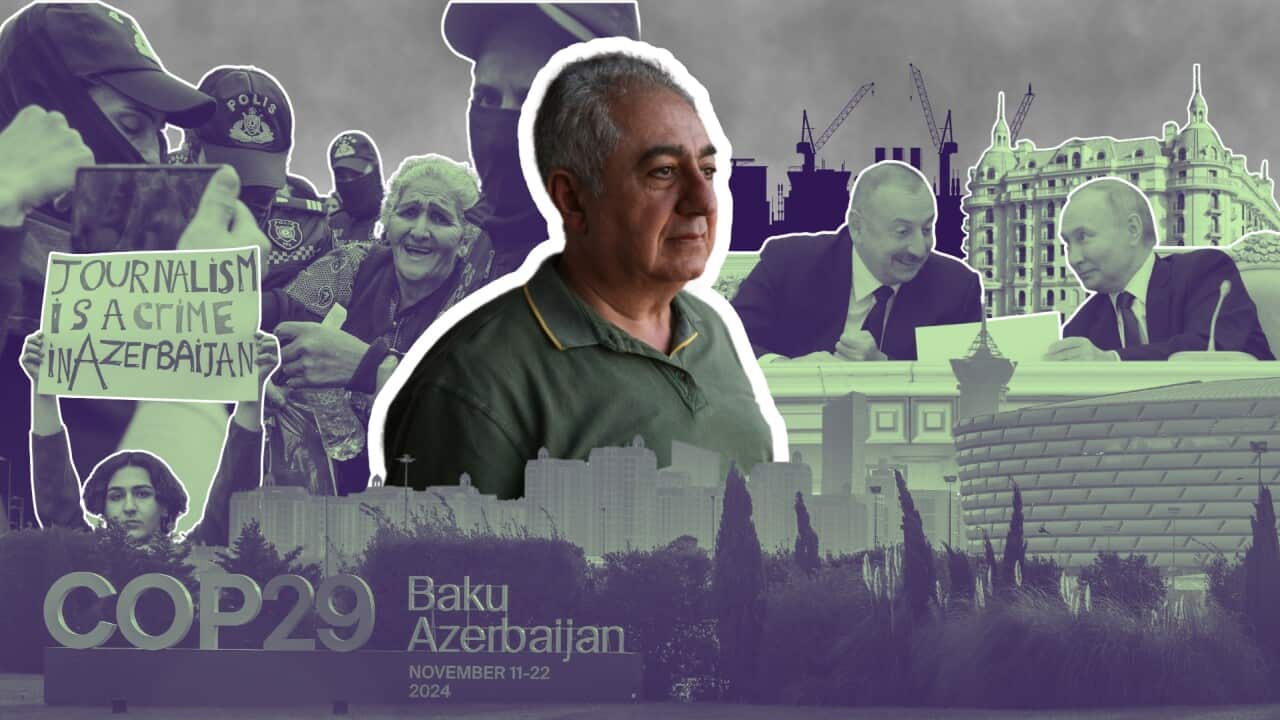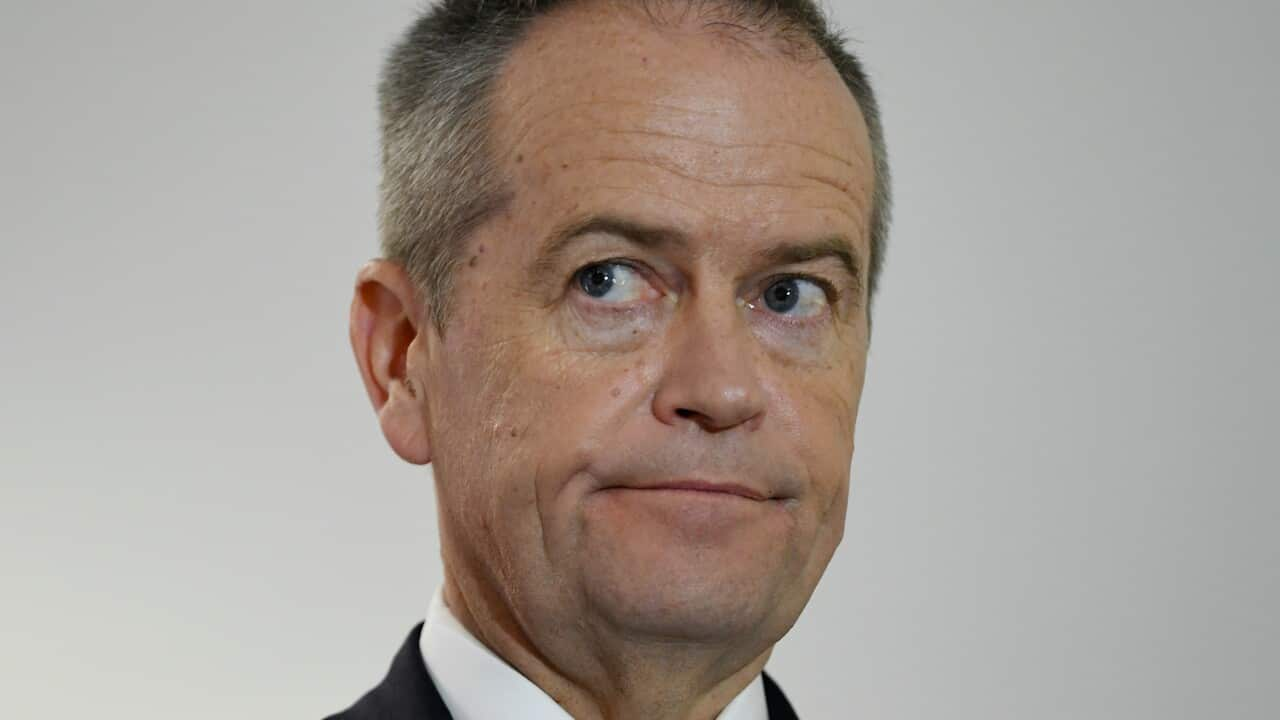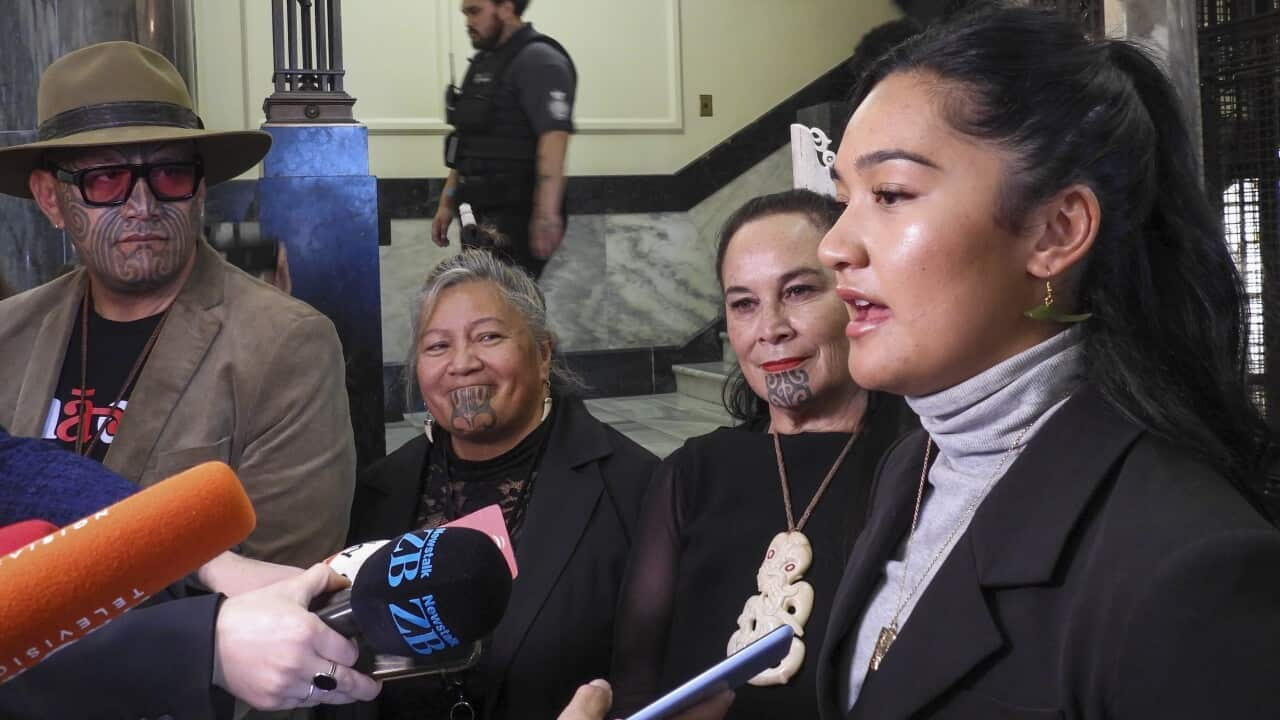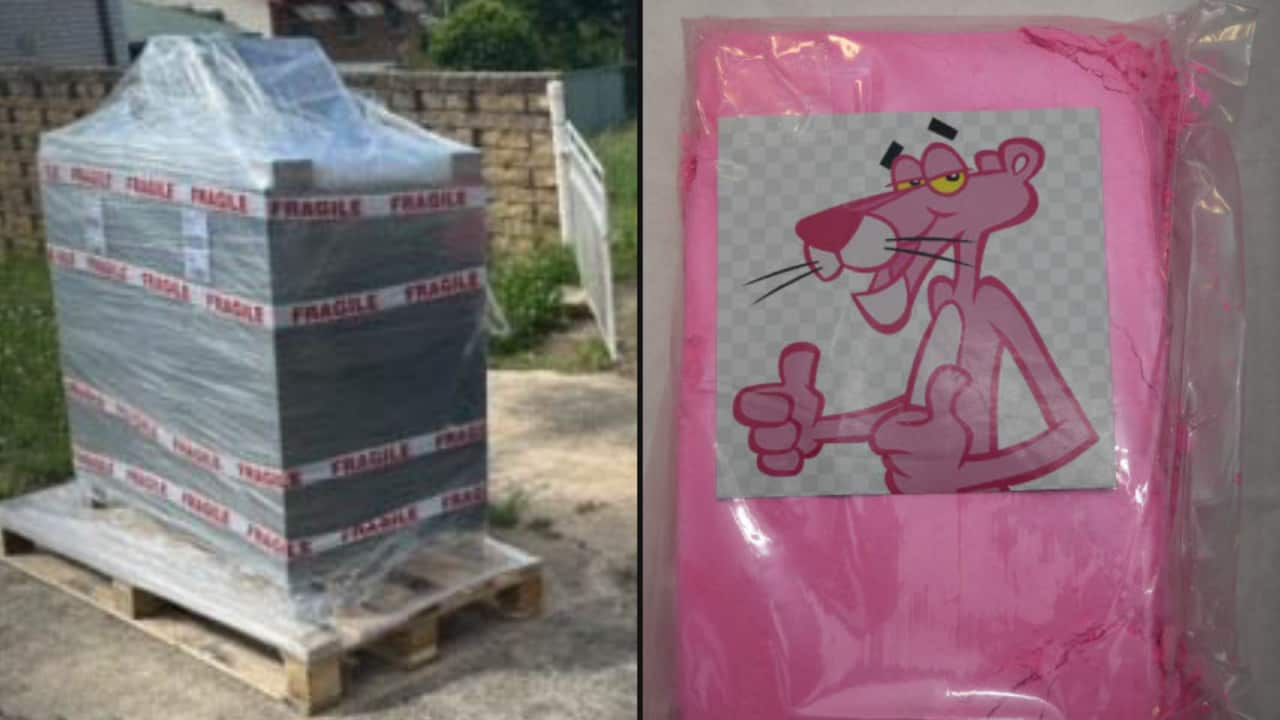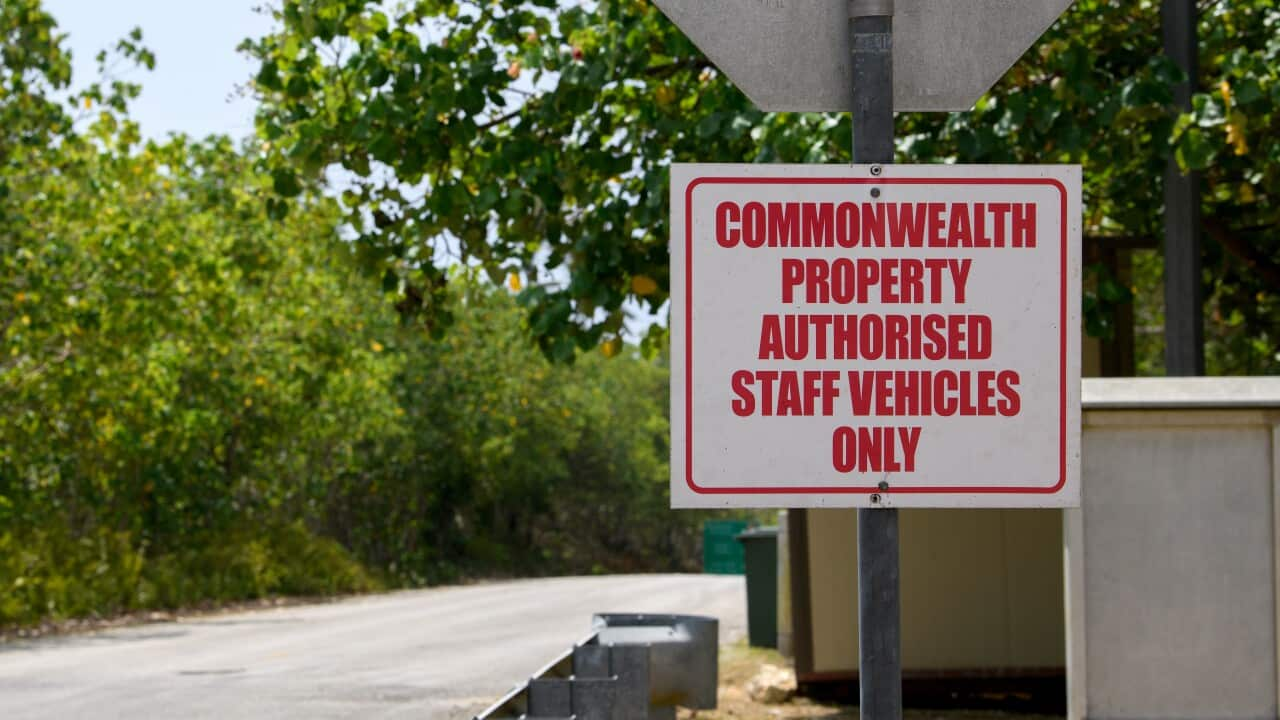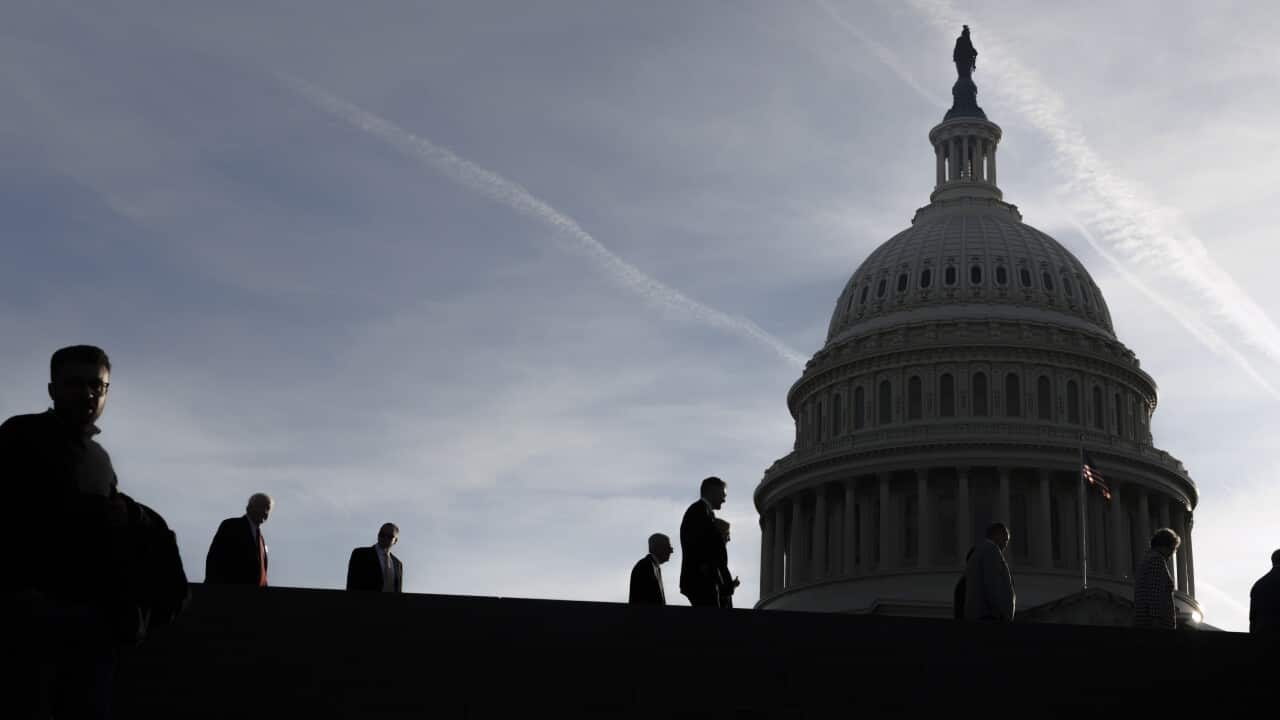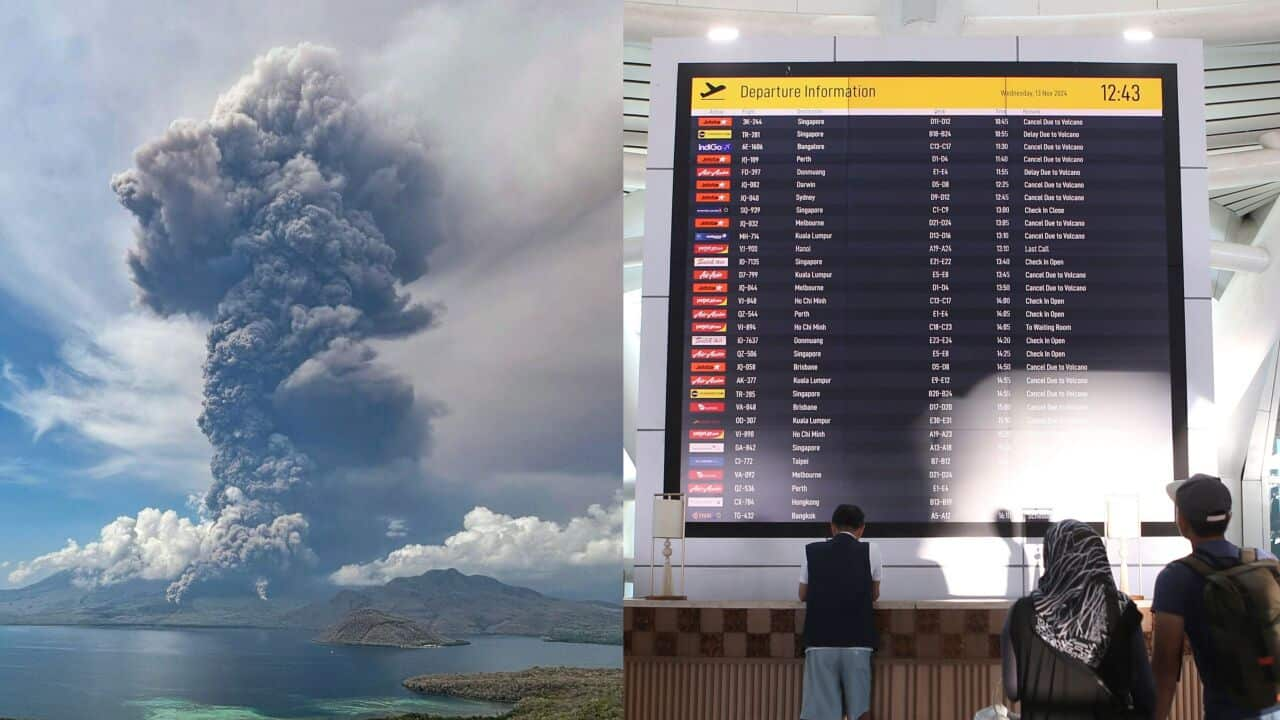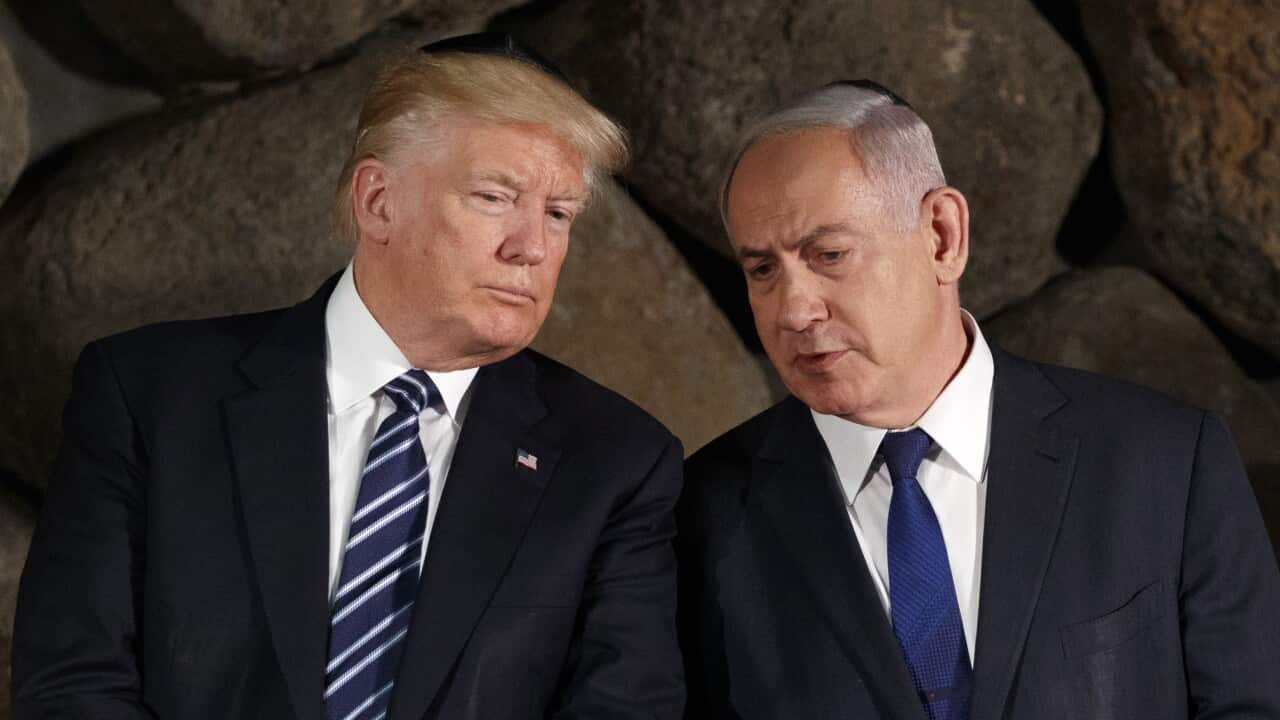Up to 10,000 nurses and midwives went on strike in NSW over being the lowest paid in the country, with a labour market expert saying stalled negotiations on part of the state government tells of “a gender issue”.
The nurses and midwives walked off the job for 24 hours on Wednesday morning, with elective surgeries across the state cancelled.
On Tuesday, the NSW government reached a historic agreement with the state’s police force for an average wage increase of 26 per cent over four years — making it now the best paid in the country. But the government has failed to bring new money to the table with nurses and midwives.
“It’s pretty hard not to reach that conclusion [of a gender issue],” John Buchanan from the University of Sydney Business School told SBS News.
“We can find the money for coercive control of the population, but we can’t find the money for the people who care for us when we are most vulnerable.”
The NSW Nurses and Midwives’ Association (NSWNMA) has been in pay negotiations with the NSW government for eight months — but hasn’t progressed from a blanket 10.5 per cent pay rise offered over three years for all NSW public-sector workers.
“We can see the male-dominated unions continuing to have increases to wages while the female-dominated unions like ours are being left behind,” NSWNMA general secretary Shaye Candish told SBS News.
“We do believe it’s a gendered issue,” she said.
Since then, nurses and midwives have been appealing for a one-off pay bump of 15 per cent.
But such a rise would cost billions of dollars and lift wages “well north” of Queensland, Victoria and other states, senior ministers say.
According to the NSWNMA, the top salary for an enrolled nurse in NSW is $68,559 a year. Enrolled nurses in all other states and territories earn above $70,000 a year, with those in the Northern Territory on just over $80,000.
The strike forced the postponement of 600 to 700 surgeries, according to NSW Health.
Only minimal, life-preserving staffing was maintained in public hospitals and health services during the strike, with emergency department wait times blowing out.
Government not responding to ‘reason and logic’
Buchanan said the police pay rise emanates from “a distinct set of relations which govern how [the police] work and how they’re paid”.
“A huge issue for them is managing worker’s compensation and insurance. The costs of running that scheme have been rising by 33 per cent annually for the last three years — an astronomical increase,” he said.
NSW Nurses and Midwives’ Association general secretary Shaye Candish said “female-dominated unions … are being left behind” in pay negotiations with the state government. Source: Supplied / NSWNMA
“That’s given the police a bit more space around which to negotiate their pay increase.”
But while Buchanan said the NSW government is “not valuing police above nurses”, it has not responded to the union’s “reason and logic” in the same way — making it hard to deny gender bias.
“The nurses themselves have done commissions, very important work from a consultancy, which has said the NSW government can raise more money from the commonwealth by having more efficient billing practices,” he said.
“The nurses have offered them a way forward.”
According to 2023 figures from the Australian Nursing and Midwifery Federation, 88 per cent of employed nurses and midwives in Australia identified as female and 12 per cent as male.
Industrial action ‘unnecessary’
The industrial action came after a commitment the nurses’ union made to the state industrial umpire to halt strike action.
That commitment, upon which workers received an interim wage rise of three per cent, was to cease industrial action for a period of four weeks until a court had an opportunity to adjudicate the pay dispute.
But once the agreed period had expired with no new offer, Candish said the union was not going to “sit down, shut up and take that”.
NSW Health Minister Ryan Park said he was disappointed the union walked away from its commitment, saying the industrial action was “unnecessary” and would “cause inconvenience and worse to patients and their families”.
“Over the course of four weeks of intensive negotiations, we have reached agreement on all of the [union’s] non-wage claims, as well as put forward a range of options to fund and deliver a new increased wage offer,” he said.
The 24-hour strike forced the postponement of hundreds of surgeries — with only minimal, life-preserving staffing maintained in all public hospitals and health services. Source: Supplied / NSWNMA
NSW Premier Chris Minns said Labor’s 10.5 per cent, three-year offer — on top of a 4.5 per cent rise in 2023 — was significantly more than the previous government had offered.
“The union has not been prepared to make changes the way other unions in NSW have, and as a result, we’ve got less to play with,” he said.
But Candish said the union is within its right to strike as the government had not entered those negotiations willing to use new money to fund pay increases.
‘A very deep problem’
While Australia’s health services are among the best in the world, Buchanan maintains it’s not “a Rolls-Royce system”.
“There are literally tens of thousands of nurses out there who are trained but not working in the profession,” he said.
“That is a sign of a very deep problem.”
Candish said it’s impossible to expect nurses and midwives to achieve the types of savings that are needed without proper system reform.
“In some places, the government’s own Bureau of Health Information data demonstrates that services are in demand like never before with higher numbers of patients, sicker, patients longer waiting times,” she said.
“The only option is for government to sit back down at the table, find new money to put into health, and show nurses and midwives that they do command the respect of this government.”
With additional reporting by the Australian Associated Press.




